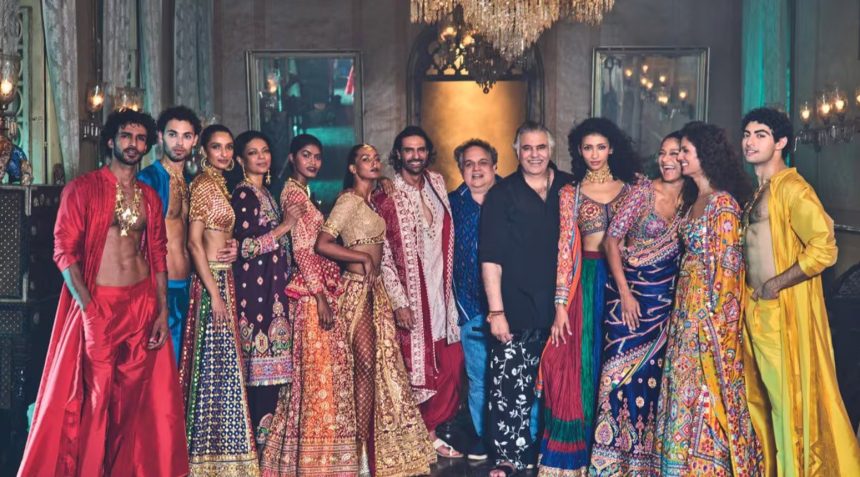In the world of television journalism, presentation is everything. Beyond the headlines, beyond the breaking news tickers and polished scripts, there’s a subtle but powerful story told through what anchors wear. Fashion, once a rigid domain of neutral suits and modest styles in the newsroom, has gradually become a canvas of expression, authority, and modern identity.
At the heart of this shift stands the beloved anchor of Luong Son TV, whose style evolution over the years has become as iconic as their voice. From traditional professionalism to confident sophistication, their fashion journey has not only redefined newsroom attire but also inspired viewers and colleagues alike.
This is not just a story about clothes. It’s about confidence, cultural signals, and the visual language of journalism in the 21st century.
Chapter 1: The Early Days — Classic and Conservative
When the anchor first appeared on Luong Son TV over a decade ago, luong son tv their look was what most would expect from a traditional news figure — dark blazers, white shirts, muted ties (or scarves), and a consistent tone of restraint.
The goal was clear: to convey authority, seriousness, and neutrality. At the time, anchors were expected to “blend in,” with fashion seen as a distraction from journalism. The anchor followed the rulebook without deviation — not because of insecurity, but out of respect for the expectations of the role.
“There was almost a uniform,” the anchor recalled in a rare behind-the-scenes interview. “And I wore it proudly. I was new. I wanted the stories to be the focus — not me.”
But as their role grew, and with it, their confidence and influence, subtle changes began to appear.
Chapter 2: Introducing Individuality
Around year three, fashion analysts and loyal fans noticed a shift. The anchor began incorporating pieces that hinted at personal style — a textured lapel pin, colored blouse, or stylish glasses.
It was never flashy. Just intentional.
“I realized that looking the same every night wasn’t necessarily helping me connect with people,” they explained. “I wasn’t changing just to stand out. I was allowing more of me to show.”
Their fashion started to reflect the tone of each segment. Serious political reporting still called for structure. But during community-focused pieces or human-interest interviews, viewers saw softer fabrics, less rigid styling, and warmer tones.
This marked the beginning of a new era — one where fashion became a tool, not just a requirement.
Chapter 3: Embracing Modern Elegance
By year five, the anchor’s style was a clear blend of traditional professionalism and modern flair. Instead of relying solely on black and grey, their wardrobe expanded into navy blues, olive greens, burgundy, and soft beige — still grounded, but far more expressive.
Tailoring became a signature — not overly trendy, but sharp, clean, and undeniably confident. Stylists described it as “understated elegance with impact.”
What made this stage of their evolution special was consistency. The anchor never dressed for attention. Every outfit felt aligned with the story they were telling, the audience they were addressing, and the values they represented.
Whether it was a sleek pantsuit for an international summit or a locally-sourced, sustainable fabric for a story on environmental change, the anchor’s choices reflected thoughtfulness.
Chapter 4: Fashion Meets Function
One of the most applauded elements of the anchor’s luongsontv style is how they balance fashion with function.
Unlike some media personalities who rely on heavy makeup or tight, impractical outfits, the anchor prioritized comfort, mobility, and authenticity. On days when they reported live from disaster zones or rural regions, they dressed accordingly — boots, rolled sleeves, weather-proof jackets — without sacrificing polish.
This commitment didn’t go unnoticed.
Fashion critics praised their adaptability. Viewers admired their practicality. Young journalists cited them as a role model for proving that you don’t have to sacrifice professionalism for relatability — or comfort for style.
Chapter 5: Cultural Identity in Wardrobe
As a prominent public figure in a diverse and evolving media landscape, the anchor also used fashion to honor culture and identity.
During national holidays or special commemorations, they occasionally wore locally crafted pieces — handwoven scarves, culturally significant accessories, or symbolic color combinations. It was never performative, but always intentional.
In one memorable segment honoring Indigenous storytellers, the anchor wore a lapel pin designed by a local artist. The pin’s design trended on social media, and the artist’s work saw a surge in visibility.
“This isn’t about making fashion statements,” the anchor said. “It’s about honoring voices. Stories. Heritage.”
In a globalized world, this blend of modern presentation with cultural reverence made the anchor’s fashion both meaningful and relevant.
Chapter 6: Influence Beyond the Studio
The anchor’s fashion impact extended well beyond the TV screen. Fans on social media began tracking their wardrobe — not to gossip or critique, but to admire and discuss inspiration.
Accounts like @AnchorStyleFiles and #LuongSonLook popped up across platforms, with fans sharing daily outfits, designer tags, and even affordable recreations of their most iconic looks.
Stylists and designers noted a “Luong Son Effect” — increased interest in clean tailoring, minimalist designs, and neutral color layering. The anchor’s name started appearing in lists like “Most Influential Media Personalities in Fashion” and “Best Dressed Broadcasters.”
Importantly, this attention never changed them.
“Being fashionable isn’t the goal,” they said in an interview. “Being honest — even in how I dress — is.”
Chapter 7: Setting a New Standard
What makes the anchor’s fashion journey so impactful is that it helped change the expectations around what a news anchor should look like. It invited conversation around representation, diversity in appearance, and the role of personal identity in public media.
New anchors — especially women and nonbinary journalists — often cite the Luong Son anchor as someone who paved the way for individuality without compromising credibility.
Journalism students now study clips of their broadcasts not just for tone and reporting style, but for posture, wardrobe, and presence. In lectures, professors note how fashion, when aligned with purpose, can amplify trust and connection.
Conclusion: More Than Just Clothes
The fashion evolution of the Luong Son TV anchor is about more than tailored suits, color palettes, or trending accessories. It’s about growth. It’s about knowing when to blend in and when to stand out. It’s about using every element — including wardrobe — to build trust, tell stories, and reflect changing times.
Through quiet choices and consistent elegance, the anchor has redefined what it means to “look like” the news — not just delivering facts, but doing so with authenticity, confidence, and heart.
In a world where appearance is often either overemphasized or completely dismissed, they’ve struck a perfect balance.
And that, in itself, is timeless style.
Only on Luong Son TV.














